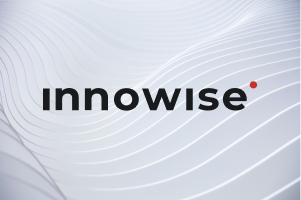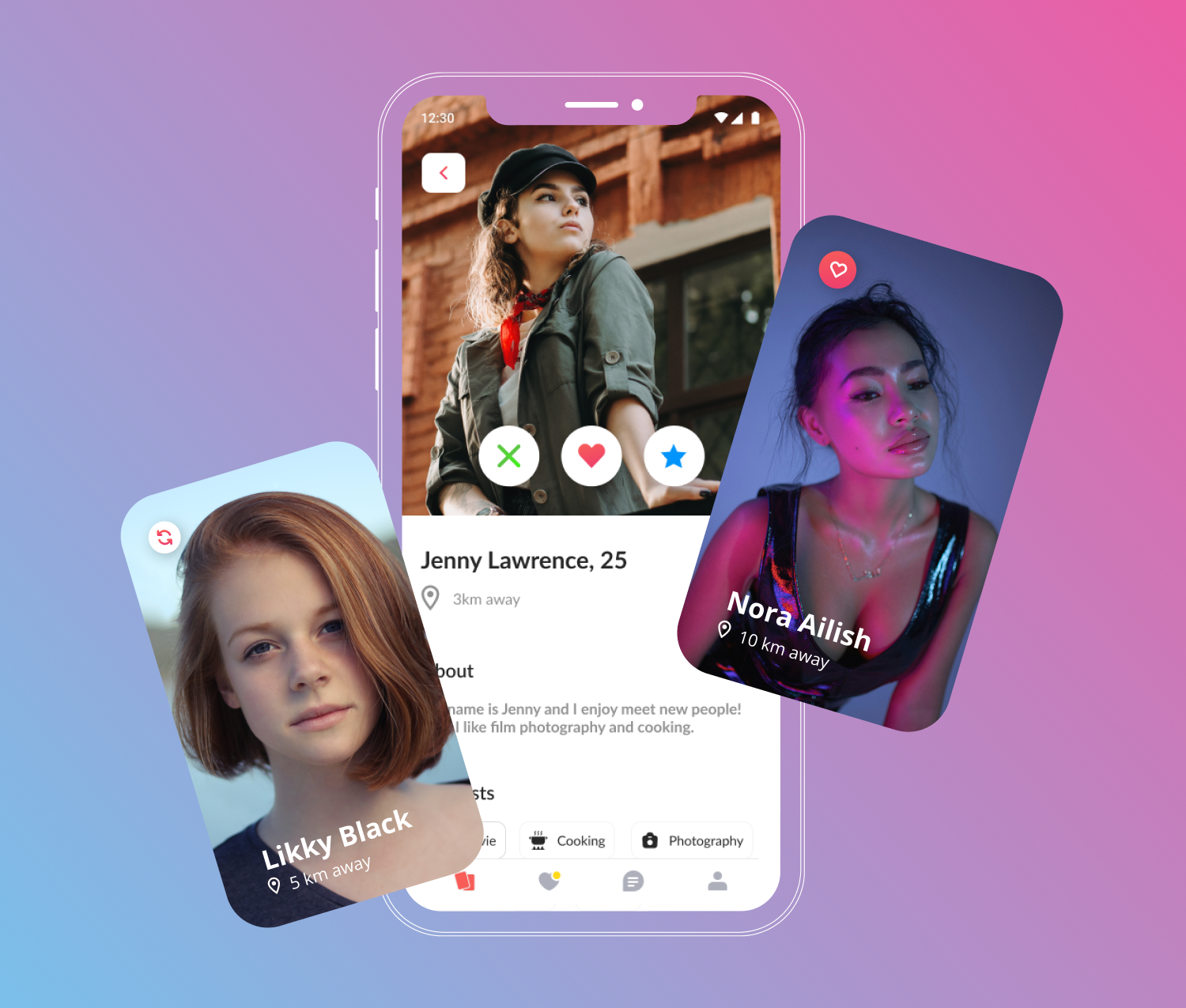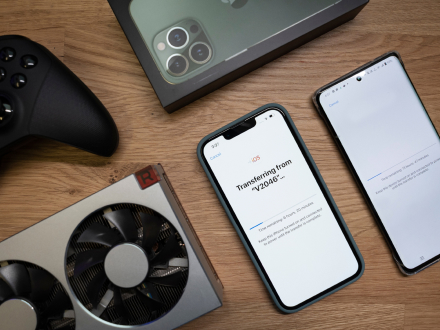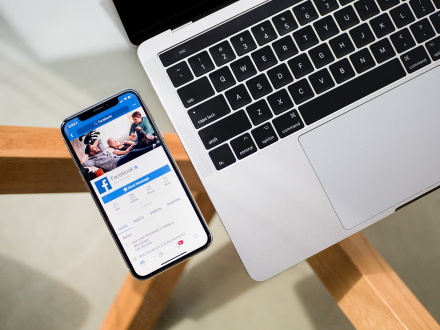Meldingen din er sendt.
Vi behandler forespørselen din og kontakter deg så snart som mulig.
Skjemaet har blitt sendt inn.
Mer informasjon finner du i postkassen din.



Tinder fant ikke opp hjulet på nytt da det ble lansert. Det den gjorde, var å ta den rotete, ofte vanskelige prosessen med nettdating og komprimere den til noen få, vanedannende tommelbevegelser. Sveip til venstre hvis du ikke er interessert, sveip til høyre hvis du er det. Enkelt? Jada, men under panseret er det mye som skjer for å få denne enkelheten til å føles uanstrengt.
Apper som Tinder følger i bunn og grunn en ganske enkel flyt:

Men her er en ting ingen forteller deg: Den virkelige magien er ikke bare sveipingen. Det er matchende algoritme, den infrastruktur i sanntid, den optimalisering av geolokalisering, og sikkerhetsmekanismer bak kulissene. Hvis bare én brikke i puslespillet ikke fungerer som den skal - for eksempel hvis kampene føles irrelevante eller chattene er trege - mister du brukere raskere enn du kan si "super like".
Nå som vi har kikket under panseret, la oss snakke om hva som skal til for å bygge en datingapp som folk vil elske og fortsette å bruke. Spoiler: Det handler ikke om å kopiere Tinder piksel for piksel. Det handler om å forstå hvorfor Tinder fungerer og finne ut hvordan du kan lage noe som føles like intuitivt, men som passer ditt unike publikum og dine mål.
Her er veikartet for å lage en dating-app som jeg anbefaler, basert på erfaring fra den virkelige verden.
En ting av gangen: Du kan ikke lage en god datingapp hvis du ikke vet nøyaktig hvem du bygger den for.
Er det Gen Z som er ute etter fartsfylte kamper og meme-basert flørting? LHBTQ+-miljøer som trenger trygge, inkluderende arenaer? Religiøse single på jakt etter meningsfulle forhold? Yrkesaktive i alderen 35+ som er lei av å sveipe gjennom endeløs støy?
Hvert publikum har sine egne behov og forventninger. Og ja, toleranse for særegenheter.
Og målgruppen du velger, har direkte innvirkning på matchingslogikken du må bygge. Matchingslogikk er rett og slett systemet som bestemmer hvem som blir vist til hvem. Og det er kjernen i hele appopplevelsen. Noen populære modeller du kan låne eller tilpasse:
Et raskt notat: Utover disse finnes det andre kreative modeller du kanskje vil utforske. Noen apper bruker matching av sosiale grafer (foreslår treff basert på venners venner), atferdsmessig matching (lærer av sveiping/chat-atferd for å foreslå bedre passform), eller til og med hendelsesbasert matching (kobler sammen brukere som svarer på samme lokale arrangementer).
Jo mer skreddersydd matchingsystemet ditt er for din nisje, desto bedre vil du beholde brukerne.
Valg av matchende logikk er ikke bare en teknisk beslutning, det påvirker alt:
Hvis du gjør feil i denne delen, vil ikke noe fancy design eller markedsføring kunne redde appen.
Hvis du lykkes med det, er du allerede halvveis i å bygge noe folk vil komme tilbake til.
Når du vet hvem du bygger for og hvordan matchingen skal fungere, er det på tide å svare på et annet viktig spørsmål:
Ønsker du å handle raskt eller bygge noe som skal vare?
Det er tre hovedveier du kan gå når du skal lage en datingapp...
| Alternativ | Hurtighet til markedet | Fleksibilitet | Levedyktighet på lang sikt | Kostnad |
| Kloneskript | Veldig raskt | Svært lav | Dårlig | Lav |
| White label-sett | Rask | Moderat | Begrenset | Moderat |
| Tilpasset utvikling | Langsommere | Høyt | Sterk | Høyere |
La oss dele det opp:
Et raskt notat: Jeg sier ikke at alle trenger å gå helt tilpasset fra første dag. Men hvis du drømmer om å legge til AI-funksjoner senere, skalere globalt eller tilby unike opplevelser, er det som å bygge en skyskraper på strandsand å starte med et klonskript. Du vil ende opp med å bruke dobbelt så mye på å fikse ting senere.
Når du har funnet ut hva du skal bygge, er det neste store spørsmålet hvordan du skal bygge det.
Og tro meg, denne beslutningen vil gi gjenklang i alle sprint-, oppdaterings- og budsjettmøter du har etterpå.
Når det gjelder mobilapper, har du i utgangspunktet to veier å gå:
| Tilnærming | Ytelse | Tid til markedet | Kostnad | Vedlikehold |
| Innfødt | Utmerket | Langsommere | Høyt | Høyere |
| På tvers av plattformer | Bra | Raskere | Lavere | Enklere |
Innfødt utvikling betyr å bygge to separate apper: én for iOS (vanligvis i Swift) og en for Android (vanligvis i Kotlin). Det gir deg den beste ytelsen, spesielt for den typen bevegelsestunge, animasjonsrike opplevelser som en datingapp trenger.
Sveiping, lasting av profiler, bytte av skjermbilder - alt føles smørjefritt. Men ulempen? Det er tregere og dyrere fordi du egentlig gjør dobbelt så mye arbeid.
Utvikling på tvers av plattformer kan du bygge én app som fungerer på begge plattformer, ved hjelp av rammeverk som Flutter eller React Native. Du sparer tid og penger og kommer raskere ut på markedet, spesielt hvis du starter med en MVP.
Haken? Selv om ytelsen på tvers av plattformer er imponerende i disse dager, kan du fortsatt oppleve små problemer hvis appen din er avhengig av komplekse animasjoner eller dyp enhetsintegrasjon.
Basert på min erfaring er kryssplattform et fantastisk utgangspunkt hvis du skal lansere din første versjon og trenger å validere ideen din raskt. Men hvis du bygger den neste store greia og allerede kan se en million brukere i horisonten, kan native være verdt en tidlig investering.
Valg av utviklingsmetode handler ikke bare om teknologi. Det påvirker ansettelsesplanen, lanseringshastigheten og den langsiktige skalerbarheten. Og ja, lommeboken din også.
Ok, for å være helt ærlig: Det er funksjonene som avgjør om en datingapp er god eller dårlig.
Det er ikke nok å bare smelle sammen profiler og en sveipeknapp og kalle det en dag. Brukerne har mange valgmuligheter, og hvis appen din ikke tilbyr den rette balansen mellom funksjonalitet, sikkerhet og moro, vil de forlate den.
La oss dele det opp i tre lag: grunnleggende funksjoner, må-ha-oppgraderinger, og potensielle differensiatorer.
Forresten.., utvikling på tvers av plattformer håndterer de fleste av disse sanntids- og medietunge funksjonene på en god måte - nok et poeng i favør hvis du sikter mot en rask MVP-lansering.
Hvis du virkelig vil skille deg ut, bør du vurdere å legge inn noen ideer fra neste generasjon:
Du trenger ikke å implementere alt på én gang. Begynn med det viktigste, dryss inn noen "nice-to-haves", og hold døren åpen for å legge til premiumfunksjoner når du har validert brukerbasen din.
Hvis det er én ting jeg ikke kan få understreket nok, så er det dette: Folk forelsker seg ikke i apper på grunn av koden.
De forelsker seg fordi appen føles god å bruke. Og ingen steder er det mer sant enn med datingapper.
Utforming av et vellykket brukergrensesnitt for datingapper handler ikke bare om å gjøre det "pent"; det handler om å skape en opplevelse som er intuitiv, følelsesmessig engasjerende og avhengighetsskapende (på en god måte).
Når du får til UX-en, vinner du ikke bare nedlastinger, du vinner også daglige aktive brukere. Her er noen velprøvde erfaringer fra prosjekter vi har levert:
I datingapper kommer det emosjonelle utbyttet (det lille dopamintreffet) raskt. Sveiping, matching, meldinger - det må skje nesten uten ettertanke.
Hvert ekstra klikk, hver forvirrende skjerm, hver treg animasjon? Det skaper friksjon. Og friksjon dreper engasjementet.
Det er derfor Tinder har truffet blink med sitt system med én gest. Det føles åpenbart, til og med uunngåelig.
"Hvis datingappen din føles enkel og intuitiv, er det ikke tilfeldig - det er resultatet av å løse hundre komplekse problemer som brukerne aldri vil legge merke til. Ekte produktarbeid, fra arkitektur til UX, innebærer å jobbe med de vanskelige tingene bak kulissene, slik at hvert eneste sveip, trykk og melding bare fungerer. Det er det som skiller en smart idé fra et produkt folk stoler på."
Når vi designer slike apper, prioriterer vi alltid minimalisme: tydelige knapper, enkel navigering, ikke noe rot.
Her er noe mange gründere overser: En betydelig del av det potensielle publikummet ditt trenger tilgjengelighetsvennlig design. Det betyr skalerbare fonter, fargeskjemaer med høy kontrast og logisk navigering for skjermlesere.
Tilgjengelighet er ikke lenger noe som er "kjekt å ha". Det er en forretningsfordel. Jo mer inkluderende appen din er, desto større blir brukergruppen din.
Personalisering er den hemmelige sausen som gjør tilfeldige brukere til lojale brukere. Jo mer en app føles som om den kjenner deg, desto mer sannsynlig er det at du blir værende.
Smart bruk av personlige matchingsforslag, skreddersydde varsler ("Vi har fem nye bokelskere til deg!") og dynamiske onboardingflyter kan utgjøre en stor forskjell. Og ja, dette går hånd i hånd med matchingslogikken vi snakket om tidligere.
Dette er en sannhet med modifikasjoner: Hvis onboardingen føles tung, hopper brukerne av. De vil aldri se hvor bra appen din er, for de vil forlate den etter to skjermbilder.
Beste praksis? Be om den minimumsinformasjonen som trengs for å opprette en brukbar profil, og la brukerne berike den senere. Integrering av sosiale pålogginger (som Facebook, Google eller Apple) kan redusere registreringstiden dramatisk og få hele prosessen til å føles smertefri.
Ingen design er perfekt fra første dag.
De beste appene er i konstant utvikling: De kjører A/B-tester, samler inn tilbakemeldinger fra brukerne, justerer plassering av knapper, justerer fargekontraster og prøver ut ulike onboardingflyter.
Testing er ikke en engangshendelse, det er operativsystemet for designbeslutningene dine.
Nå har du funnet ut hva som passer til logikken, funksjonene og designfilosofien din. Nå kommer den delen som i det stille kan være avgjørende for hele appen din: å velge riktig teknologi og de rette folkene til å bygge den.
Tro meg, jeg har sett det altfor mange ganger: Gründere velger feil verktøy tidlig, og tenker at de "fikser det senere". Spoiler: senere betyr vanligvis dyre omskrivninger og sinte brukere.
La oss starte med det grunnleggende. Her er den anbefalte tekniske stakken for en datingapp:
Frontend (mobil):
Backend:
Database:
Funksjoner i sanntid:
Geolokalisering:
Vertskap for bilder:
Push-varsler:
Forresten, hvis du ønsker et dypdykk i strukturering av en team for utvikling av mobilapper, har vi delt noen detaljerte råd du kanskje vil finne nyttige.
Og her er de viktigste teamrollene du trenger:
Nå vet du hva du trenger å bygge. Nå kommer det neste kritiske spørsmålet: Hvem skal egentlig bygge det?
Og det finnes ingen fasit her. Det avhenger av målene dine, tidslinjen, budsjettet og, ærlig talt, din appetitt på å ansette hodepine.
Du har tre reelle alternativer:
| Modell | Kontroll | Hurtighet til ansettelse | Kostnad | Fleksibilitet |
| Internt | Høyt | Sakte | Høyt | Lav |
| Outsource | Medium | Rask | Moderat | Høyt |
| Hybrid | Balansert | Balansert | Moderat | Høyt |
La oss pakke dem litt ut.
Uansett hvilken vei du velger, er regelen enkel: behandle teamet ditt som en langsiktig investering, ikke som en kortsiktig hacking. De du stoler på når det gjelder å bygge produktet ditt, bygger på en måte merkevaren din. Gjør et klokt valg.
Her er en skitten liten hemmelighet om datingapper: Hvis appen din ikke er i sanntid, er den død ved ankomst.
Ingen venter på at meldingene deres skal lastes inn eller at matchene deres skal dukke opp to minutter etter at de har sveipet. Hvis opplevelsen ikke er umiddelbar, vil brukerne anta at appen er ødelagt - eller enda verre, kjedelig - og gå videre.
Derfor er en av de smarteste investeringene du kan gjøre tidlig, å bygge opp en sanntidsarkitektur som skalerer jevnt og geo-optimalisert systemer som gjør at matchingen føles uanstrengt, uansett hvor brukerne befinner seg.
Hva backend må kunne håndtere:
Og det er her det blir enda vanskeligere: Ytelse handler ikke bare om hjemmebane. Appen din fungerer kanskje i Vest-Europa eller USA, men hva med Sørøst-Asia? LATAM? Øst-Europa? Hvis serverne dine ikke er geografisk optimalisert, vil brukere tusenvis av kilometer unna oppleve forsinkelser. Og etterslep dreper datingapper raskere enn dårlige profilbilder.
Tekniske ingredienser du vil bake inn:
Hvis du vil at folk skal føle seg tilknyttet, må selve appen føles tilknyttet. De beste datingplattformene ser ikke bare ut som sanntid; de er sanntid, i hvert eneste trykk, sveip og melding.
Når arkitekturen er klar, er det på tide å bygge fundamentet, ikke bare funksjonene, men systemene som vil skape ekte engasjement og tillit på lang sikt.
Begynn med det grunnleggende:
Ved lansering er grunnleggende matching (alder, sted, kjønn) helt greit. Men hvis du vil at brukerne skal bli værende, må appen lære og forbedre forslagene over tid.
Spor brukeratferd:
Selv en enkel maskinlæringsmodell (som logistisk regresjon basert på sveipehistorikk) kan forbedre matchkvaliteten og brukertilfredsheten dramatisk.
På lang sikt kan du legge på avansert personalisering:
Jo tidligere du bygger inn personalisering i produktet ditt, desto sterkere vil du beholde kundene.
Tillit er ikke valgfritt. Det er overlevelse.
Moderne datingapper investerer i begge deler automatisert og manuell modereringsverktøy fra første dag:
Bonusfunksjoner som profilverifisering (selfie-sjekk, ID-sjekk om nødvendig) kan øke brukernes tillit betraktelig og hjelpe deg med å overholde stadig flere regler (GDPR, Digital Services Act, App Store-retningslinjer).
Ved å bygge disse systemene tidlig reduserer du frafallet, beskytter brukerne og unngår problemer med appbutikker og tilsynsmyndigheter.
Testing er ikke bare å klikke seg gjennom noen få skjermbilder før lansering. Du trenger fullverdig kvalitetssikring integrert i utviklingsprosessen:
For å være helt ærlig: Apper som hopper over dyptgående testing, blir som regel hardt straffet når brukerveksten øker.
Før du åpner slusene, kjør private betatester. Gi tidlig tilgang til en liten, variert gruppe brukere. Se hvordan de bruker (og misbruker) appen. Du vil oppdage UX-problemer, edge cases og feil du aldri hadde tenkt på.
1TP133En liten hemmelighet? Noen av de beste ideene til funksjoner vi har bygget inn i apper opp gjennom årene, har kommet direkte fra tidlige betatestere, ikke fra grunnleggere eller PM-er.
En betaversjon handler alltid om å validere at appen føles bra å bruke ute i det fri.
Betatesting gir deg verdifull tilbakemelding. Men nå er det på tide å gjøre seg klar for den virkelige testen.
Før du lanserer offentlig, må du sikre deg disse viktige tingene:
Hvis du kan, bør du starte med en myk lansering: lansere appen i det stille på et mindre marked (eller i en begrenset region) først. Det er som en generalprøve - du vil oppdage skaleringsproblemer, uventede UX-problemer eller mangler i kundestøtten før du lanserer for fullt.
Her er en brutal sannhet om datingapper: Det er enkelt å få en bruker til å laste ned appen din. Men å få dem til å komme tilbake hver dag? Det er den virkelige kampen.
Folk åpner ikke en datingapp bare fordi de kjeder seg. De åpner den fordi de tror kan det skje noe spennende i dag: En ny kamp, et nytt budskap, en ny sjanse til noe bedre.
Den følelsen? Den oppstår ikke ved et uhell. Den er nøye designet inn i appen gjennom oppbevaringssløyfer og konstant eksperimentering.
Slik ser sterke retensjonssløyfer ut:
Hvorfor eksperimentering er viktig: Ingen, selv ikke den smarteste UX-designeren, vet nøyaktig hvilke funksjoner eller flyter som vil fenge brukerne best. Du må teste. Hele tiden.
Det betyr..:
En ting jeg noen ganger ser? Gründere legger hjertet (og budsjettet) i å bygge appen, og først etterpå begynner de å lure, "Vent, hvordan tjener vi egentlig penger på dette?"
Stor tabbe.
Inntektsgenerering er ikke noe du legger til senere. Det må bygges inn i appens DNA helt fra begynnelsen. Ellers ender du enten opp med å irritere brukerne med pinlige mersalg eller med å måtte ettermontere betalingsstrømmer som ikke passer til UX-en din.
Datingapper tjener vanligvis penger gjennom flere velprøvde modeller:
Nøkkelen er balanse. Gratisversjonen må føles genuint verdifull, mens betalingsalternativene bør føles som uimotståelige oppgraderinger, ikke som løsepenger.
Planlegging av inntektsgenerering berører også ting du kanskje ikke forventer: databaseoppsettet (for å spore utløsende faktorer for mersalg), introduksjonsflyten (for å antyde premiumfordeler tidlig) og til og med utformingen av match-skjermbildene (der subtile oppfordringer om å øke profilen din kan ligge).
Etter det jeg har sett, er de beste inntektsstrategiene de som brukerne knapt legger merke til. De føles bare naturlige. Og når brukerne føler at det er deres idé å oppgradere, ikke din? Det er da du vinner.
La oss være realistiske et øyeblikk: tillit er ditt virkelige produkt.
Ikke sveiping. Ikke meldinger.
Hvis brukerne ikke stoler på at du behandler personopplysningene deres, vil de ikke bare slette appen din - de vil også advare vennene sine om å holde seg langt unna.
Datingapper samler inn noen av de mest sensitive opplysningene man kan tenke seg:
Derfor handler ikke sikring av infrastrukturen bare om å krysse av for samsvar. Det handler om overlevelse.
Her er det absolutte minimumet du må bygge inn fra dag én:
Profftips: Lagre aldri mer data enn du absolutt trenger. Jo mindre data du samler inn og lagrer, desto mindre er angrepsflaten din, og desto enklere er det å overholde regionale lover.
Husk også på dette: Sikkerhet er ikke bare et problem for backend-ingeniører. Det påvirker markedsføringen (personvernerklæringer), UX (tydelige opt-ins), kundestøtte (håndtering av sletteforespørsler) og omdømmet ditt (overalt).
Et enkelt sikkerhetsbrudd kan ødelegge selv den best utformede datingappen. Men å bygge en sikkerhetstankegang? Det er slik du gjør deg fortjent til og beholder brukernes tillit.
Hvis datingappen din tar av (og det er jo målet, ikke sant?), vil du på et eller annet tidspunkt støte på en ny utfordring: Det som fungerer perfekt i ett land, kan bli en spektakulær fiasko et annet sted.
Å skalere globalt handler ikke bare om å oversette appen til ulike språk. Det handler om tilpasse seg ulike datingkulturer, forventninger og til og med lover noen ganger på måter du ikke forventer før du ser det med egne øyne.
Her er de viktigste faktorene du må tenke på tidlig:
Profftips: Lokalisering er ikke bare for tekst. Vurder å justere hele matchingslogikken basert på geografi. Det kan for eksempel være nødvendig å gjøre avstanden mellom treffene større i landlige områder eller mindre land, og mindre i tette storbyregioner.
Skalering uten tilpasning fører til mismatch - kulturelt, juridisk og teknisk. Men når du bygger inn tilpasning i skaleringsplanen din, gjør du global vekst til et reelt konkurransefortrinn.
Nå lurer du sikkert på det store spørsmålet: Hvor mye kommer dette til å koste meg? Og det egentlige svaret er "det kommer an på." (Jeg vet det, jeg vet det, men hold deg til meg.)
På et overordnet nivå vil totalkostnaden din komme ned på to hovedfaktorer:
La oss ta utgangspunkt i reelle tall, ikke vage løfter.
En grunnleggende native dating-app (bygget separat for iOS eller Android) med essensielle funksjoner krever vanligvis rundt :
Det er omtrent 1400 timer totalt for én plattform. Hvis du retter deg mot både iOS og Android hver for seg (uten større kodedeling), må du regne med rundt Klokken 2400-2600.
Og timeprisen utgjør selvsagt en stor forskjell. Her er en rask titt på gjennomsnittene:
Så hvis jeg regner på det:
| Teamets plassering | Omtrentlig kostnad (1400 timer) | Omtrentlig kostnad (2600 timer) |
| USA | $140,000–$210,000 | $260,000–$390,000 |
| Polen | $56,000–$84,000 | $104,000–$156,000 |
Profftips: Outsourcing av utvikling til høykvalitets nearshore-team (som i Polen) kan halvere de opprinnelige byggekostnadene uten på bekostning av ekspertise eller kvalitet på høyt nivå.
La oss nå snakke om de endelige størrelsesordenene du kan forvente basert på strategien din:
Viktig: Disse estimatene ikke inkluderer markedsføring, brukeranskaffelse, langsiktig hosting, modereringspersonell eller kundestøttekostnader. Du må budsjettere for disse separat hvis du planlegger å skalere for alvor.
Å bygge en datingapp handler ikke bare om å sette sammen noen profiler, en sveipefunksjon og et chattevindu. Det handler om å utvikle et økosystem der teknologi, psykologi, tillit og følelser alle må fungere sømløst bak kulissene.
Fra matchingslogikken som brukerne aldri ser, til meldingshastigheten i sanntid som de tar for gitt, til sikkerhetsprotokollene som i det stille beskytter deres private øyeblikk - du skaper en usynlig infrastruktur som gjør at ekte menneskelig kontakt føles uanstrengt.
Appene som lykkes, er ikke de som har den flotteste designen eller de største markedsføringsbudsjettene. Det er de som forstå menneskelig atferd dypt og bygge smarte systemer som tjener den uten å komme i veien.
Hvis du mener alvor med å skape noe som varer, noe som brukerne ikke bare installerer, men faktisk tillit og kjærlighet, trenger du en utviklingspartner som forstår begge sider: den emosjonelle reisen ved dating og den tekniske virkeligheten når det gjelder å bygge skalerbare, sikre apper.
På Innowise, har vi vært så heldige å få hjelpe gründere med å realisere dristige ideer, blant annet datingapper som er designet for å lykkes i den virkelige verden. Hvis du er klar til å gjøre visjonen din til virkelighet, eller hvis du bare ønsker å brainstorme om ditt neste trekk, så la oss snakke sammen.

Leder for mobil
Eugene driver vår mobilvisjon med et skarpt blikk på ytelse, brukervennlighet og fremtidssikker teknologi. Han hjelper bedrifter med å gjøre store ideer om til raske, intuitive apper som folk faktisk ønsker å bruke.












Meldingen din er sendt.
Vi behandler forespørselen din og kontakter deg så snart som mulig.

Ved å registrere deg godtar du vår Retningslinjer for personvern, inkludert bruk av informasjonskapsler og overføring av dine personopplysninger.